Variable Resistor – Overview and Explanation
An Overview on Variable Resistors – Construction, Working and Different Applications
What is a Resistor Overview
- In an electric circuit, the resistor is a passive, two terminal component that obstructs the flow of current and dissipates power once current flows through it. It is represented in electric circuits by the symbol in Figure 1. The ratio of voltage to current is called the resistance and expressed by Ohm’s Law as shown in Figure 2.

Figure 1: Resistor Symbol

Figure 2: Ohm’s Law
- Ohm’s law states that current flowing through a resistor in an electric circuit is directly proportional to the applied voltage when the temperature remains constant. Therefore, it is logical to assume that normal resistors have two terminals and they have constant resistance since their resistance can not be changed.
Definition of a Variable Resistor
- As the name suggests, the variable resistor is a passive, three terminal device that can adjust its resistance via third terminal located between two terminals so that the obstruction to the flow of current goes up and down. Therefore, variable resistor circuit symbol has an arrow which represents resistance variation. The electrical symbol of variable resistor shown in Figure 3.

Figure 3: Variable Resistor Symbol
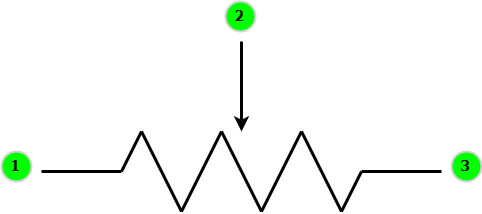
Figure 4: Variable Resistor Symbol
- The resistance of a variable resistor can be changed between zero to a certain maximum value with its third terminal. When the circuit diagram of the variable resistor in Figure 4 is carefully examined, you can see constant resistance exist between the terminals 1 and 3. Terminal 2 (in the middle) is the only terminal which has the ability to move. Therefore, in order to change resistance you must use anyone of the side terminals with the moving terminal.
Operation Principles of Variable Resistors
- Variable resistors are widely used in electric circuits to adjust the value of current or voltage, since the resistance of variable resistors can be set to a certain value. Variable resistors allow you to adjust the value of voltage by changing the resistance and keeping current constant . To adjust the input voltage, a voltage source is connected to the terminals 1 and 3 as shown in Figure 5. The output voltage between terminals 1 and 2 can be calculated by the voltage division formula shown in Figure 6.
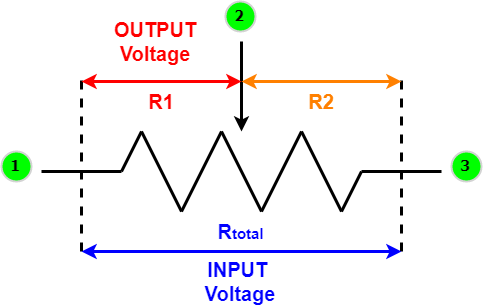
Figure 5: Usage of Variable Resistor as Voltage Divider
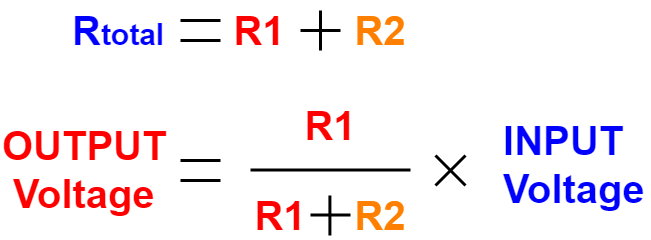
Figure 6: Voltage Division Formula
Construction of a Variable Resistor
- Although there are different types of variable resistors, their working principle is the same. When the inside of a variable resistor is examined such as Figure 7, there is a fixed resistance called the resistive track which is between terminals 1 and 3. Terminal 2 is connected to the knob and the slider (wiper) has a direct contact with the knob. The resistance between terminals 1 and 2 or 2 and 3 can be changed by adjusting the knob in the middle as represented by red circle in Figure 7.
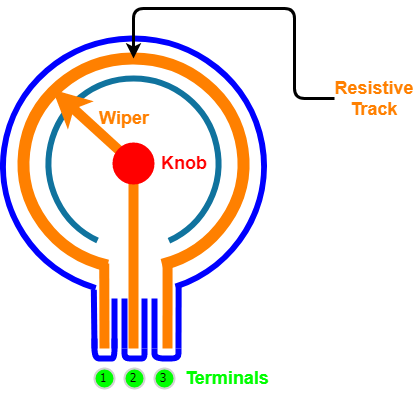
Figure 7: Variable Resistor
Types of Variable Resistors
- There are different types of variables resistors which all have almost the same working principle that was illustrated in the previous sections. However, terminal configuration and resistance value of a variable resistor can be adjusted with respect to various environmental parameters. These different types of variable resistors include:

Potentiometers
- As mentioned in previous sections, variable resistors are often used to control voltage or current. Potentiometers is one of the most popular types of variable resistors. They are preferred in applications where voltage control is required. There are mainly two groups of potentiometers known as mechanical and digital. Mechanical potentiometers such as linear and rotary potentiometers have accuracy problems in vibrational circumstances. Digital potentiometers are commonly used due to sensitivity problem of mechanical potentiometers. One of the most fundamental uses of digital potentiometers is to come up with resistance drift problem that occurs in challenging environmental conditions. Since digital potentiometers can be adjusted by communication protocols such as I2C, they are also quite useful in cases where mechanical resistance adjustment isn’t possible.
Rheostats
- The construction of a rheostat is similar to that of a potentiometer. However, the rheostat’s moving terminal is short circuited with one of the side terminals as shown in Figure 8. Rheostats are preferred in applications where resistance adjustment or current limitation required.
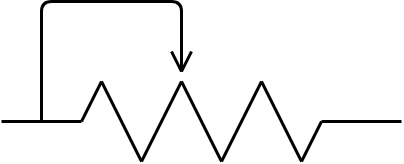
Figure 8: Rheostat Symbol
Photoresistors
- Photoresistors also known as light dependent resistors (LDRs) are a common type of variable resistor. Their resistance changes with respect to the intensity of incoming light due to the photoelectric effect. Photoresistors can be preferred in environments where intensity of the light varies.
Force Sensitive Resistor
- As the name suggests, the resistance of a force sensitive resistor changes with respect to the applied force level. They are generally used in robotic applications such as inside of the grippers of a robot.
Thermistors
- The resistance of a thermistor changes with respect to temperature. There are two types of thermistors known as negative temperature coefficient (NTC) and positive temperature coefficient (PTC) thermistors . The resistance of PTC thermistors is directly proportional to the temperature, whereas the resistance of NTC thermistors is inversely proportional to the temperature. Thermistors are preferred in different industrial applications where detection of the temperature variation is critical.
Humistors
- As the name suggests, the resistance of the humistor changes with respect to the variation of the humidity. Humistors are used in many internet of things (IOT) devices to detect environmental changes.
Applications of Variable Resistors
- Variable resistors are found in many of the devices/electronics we have in our homes. Some of these include radios, speakers, microphones, TVs, oscillators, smart home control devices etc. Potentiometers are generally used in home electronic appliances where speed or volume level control needed.
- Rheostats are used where current or resistance levels should be adjusted. A common example is the dimming of lights. In summary, variable resistors are popular in applications where voltage control or current adjustment required.
Shop Variable Resistors
Read more from our Blog

